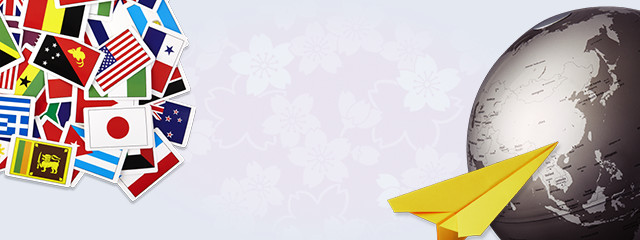
Faculty of International Studies
еӯҰйғЁгғ»зҹӯеӨ§гғ»еӨ§еӯҰйҷўпјҸж•ҷиӮІ
еҸ–гӮҠзө„гҒҝгғ»гғ—гғӯгӮёгӮ§гӮҜгғҲзҙ№д»Ӣ и©ізҙ°
еӣҪйҡӣеӯҰйғЁеҸ–гӮҠзө„гҒҝгғ»гғ—гғӯгӮёгӮ§гӮҜгғҲзҙ№д»Ӣ и©ізҙ°
жӣҙж–°ж—Ҙпјҡ2017е№ҙ04жңҲ18ж—Ҙ
гҖҗеӣҪйҡӣеӯҰйғЁгҖ‘гғӘгғ¬гғјгғ»гӮЁгғғгӮ»гӮӨ (1) Lillian Swain вҖңThis is what democracy looks like! Or is it?вҖқ
гҖҖеӣҪйҡӣеӯҰйғЁгҒ§гҒҜж–°гҒҹгҒӘи©ҰгҒҝгҒЁгҒ—гҒҰгҖҒгҒ»гҒј1йҖұй–“й–“йҡ”гҒ®гғӘгғ¬гғјеҪўејҸпјҲдј‘жҡҮжңҹй–“гӮ’йҷӨгҒҸпјүгҒ§гҖҒе…Ёж•ҷе“ЎгҒ«гӮҲгӮӢзҹӯгҒ„гӮЁгғғгӮ»гӮӨгӮ’HPгҒ«жҺІијүгҒҷгӮӢгҒ“гҒЁгҒ«гҒ—гҒҫгҒ—гҒҹгҖӮгғҶгғјгғһгҒҜгҖҒз ”з©¶гҒ«гҒӢгӮ“гҒҷгӮӢгҒ“гҒЁгӮӮгҒӮгӮҢгҒ°гҖҒжҷӮдәӢзҡ„гҒӘгҒ“гҒЁгҖҒгҒӮгӮӢгҒ„гҒҜиҝ‘еҲҠжӣёгӮ„жҳ з”»гҒӘгҒ©гҖҒгҒ•гҒҫгҒ–гҒҫгҒ§гҒҷгҖӮеңЁж Ўз”ҹпјҲгҒЁгҒҸгҒ«пј‘пҪһ2е№ҙз”ҹпјүгҒ®гҒҝгҒӘгҒ•гӮ“гҒ«гҒҜгҖҒгӮјгғҹгҒ®йҒёжҠһгҒ®еҸӮиҖғиіҮж–ҷгҒӘгҒ©гҒЁгҒ—гҒҰгҖҒеҸ—йЁ“з”ҹгҒқгҒ®д»–гҒ®ж–№гҖ…гҒ«гҒҜгҖҒжң¬еӯҰйғЁгҒ®йӣ°еӣІж°—гҒ®дёҖз«ҜгӮ’ж„ҹгҒҳгӮӢжқҗж–ҷгҒЁгҒ—гҒҰгҖҒиӘӯгӮ“гҒ§гҒ„гҒҹгҒ гҒ‘гӮҢгҒ°е№ёгҒ„гҒ§гҒҷгҖӮ
This is what democracy looks like! Or is it?
Lillian Swain
Americans living abroad are able to vote by absentee ballot (дёҚеңЁиҖ…жҠ• зҘЁ), so last fall, I sent my vote by post for the US presidential election.
According to the United States Elections Project, an all-time record number of people voted along with me, breaking the previous record of the number of Americans who voted in 2008, when Barack Obama was elected. Still, that means only 60 percent of the people who could vote actually voted, and Donald Trump became president by receiving the votes of only around 30 percent of the people.
Unfortunately, this was not unusual. The number of people who come out to vote in US elections is low; for the last 30 years, the turnout has stayed between 50 and 60 percent. The US ranks 31st among the 35 countries in the Organization for Economic Cooperation and Development (OECD), according to the Pew Research Center. Meanwhile, Belgium had an 87.2 percent turnout rate in a recent (2014) election.
How about Japan? Voter turnout in the July 10th, 2016 Upper House election was 54.70 percent, the fourth-lowest on record. That was the first time that 18- and 19-year-olds could vote. According to the final tally, 51.17 percent of 18-year-olds and 39.66 percent of 19-year-olds voted in the election. These rates were lower than the total average of 54.70 percent, but higher than the rate of voters in their twenties, which was 33.37 percent.
Why did 18-year-olds vote more than 19-year-olds? Various reasons have been suggested, but one is that most 18-year-olds were high school students at the time, and participated in voter education programs at school. If that is true, then it seems that high schools had a positive effect on voting rates. We in the university need to try harder to encourage voting by talking about issues at stake in elections, and helping each other understand the critical importance of using our voices, and our votes.






